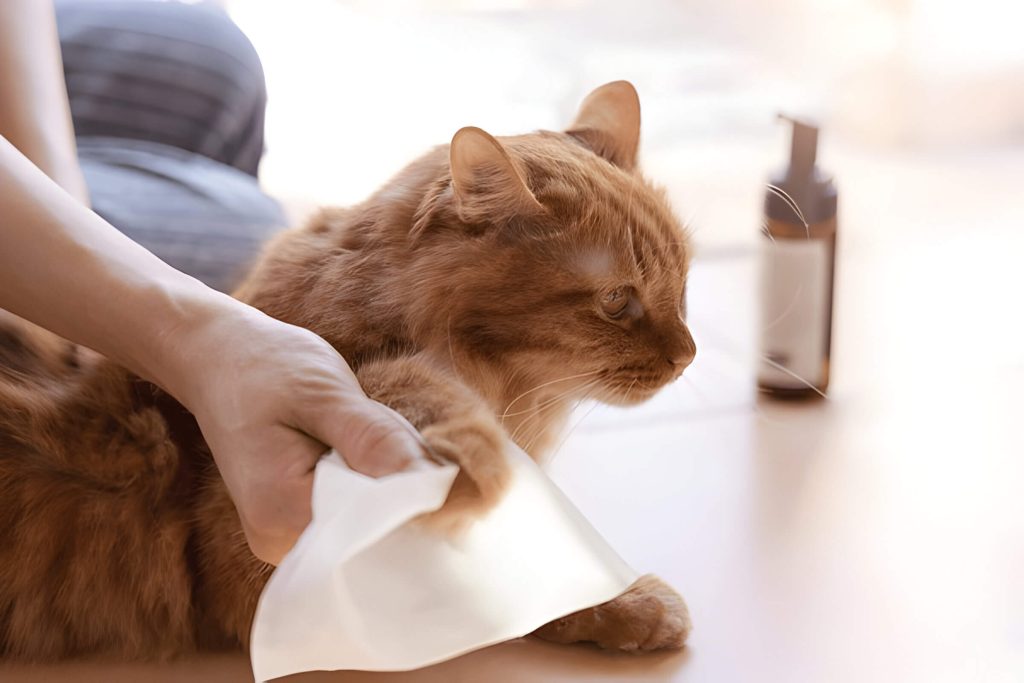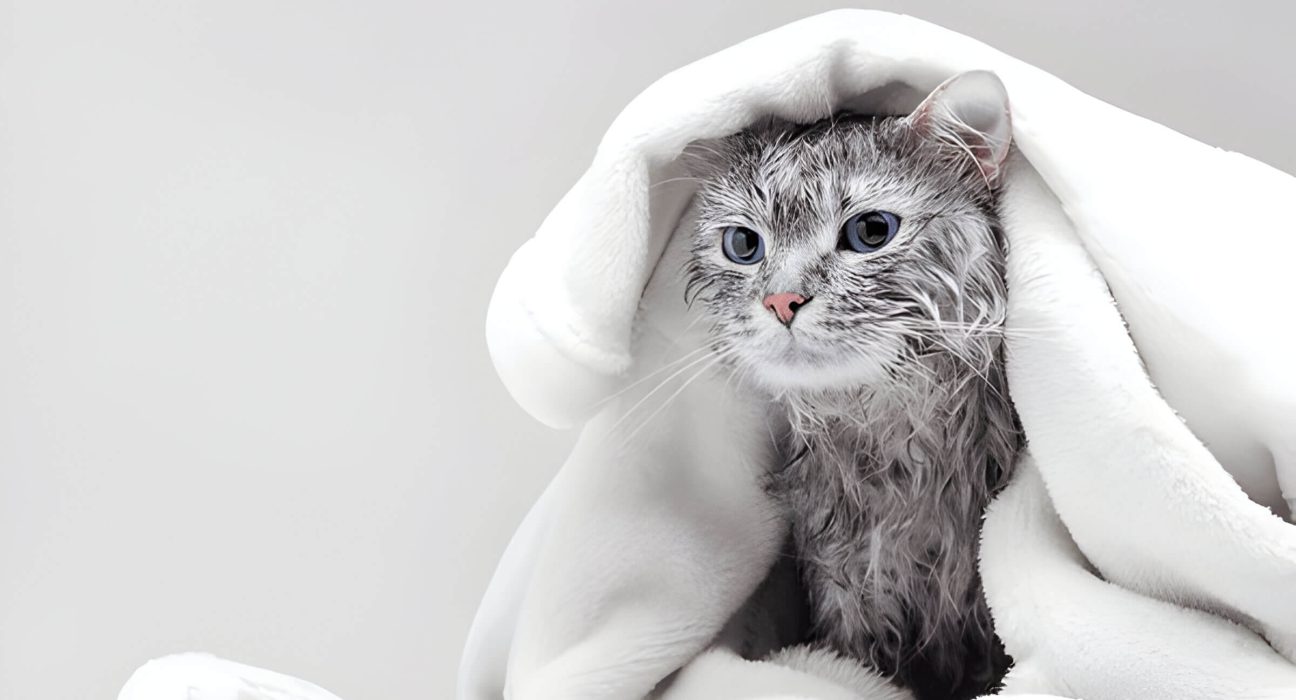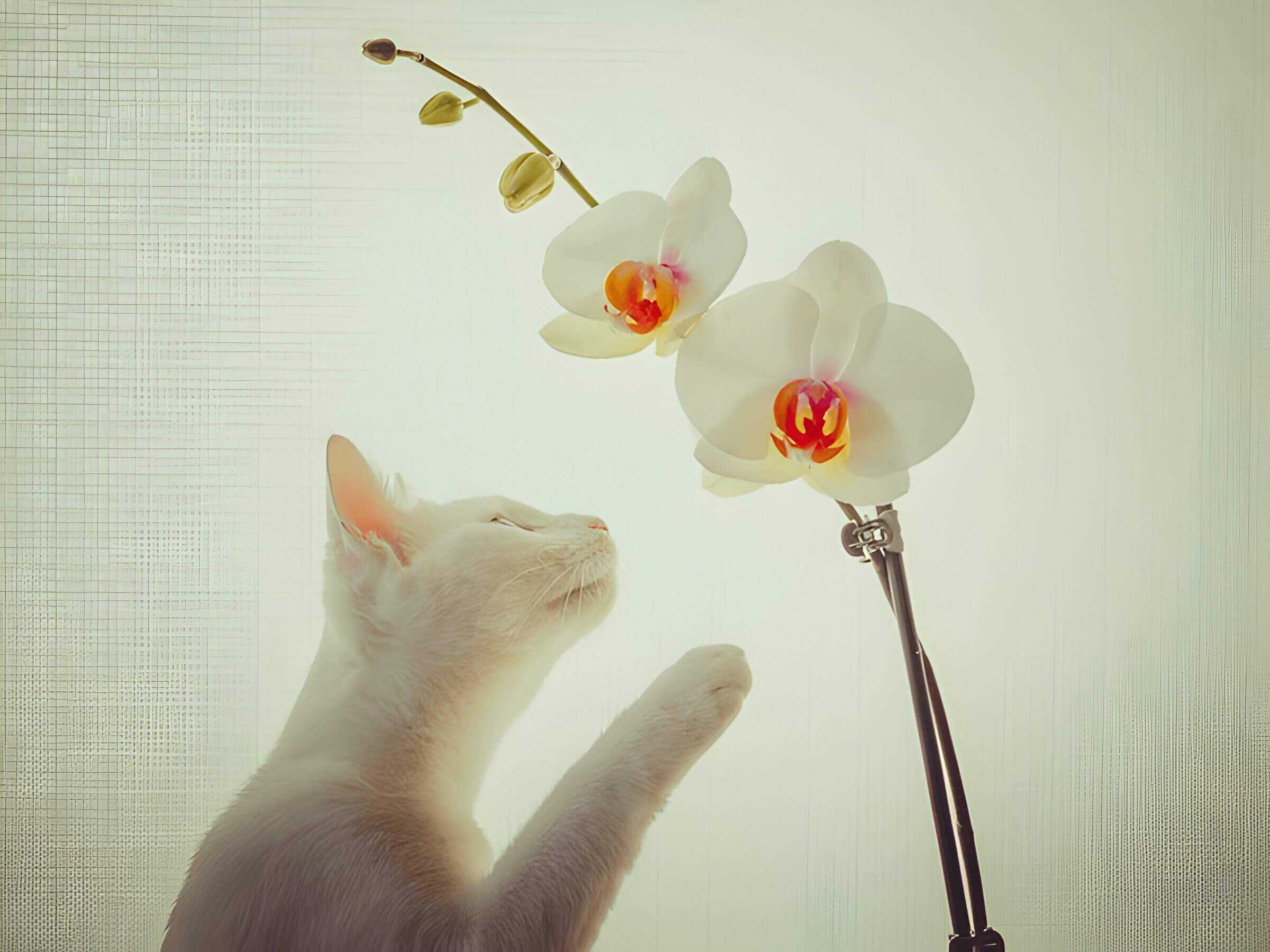Cats are known for their meticulous grooming habits, which often raises the question: do cats need baths? In fact, most healthy cats do not need to be bathed regularly. Their rough tongues and natural oils keep their coats clean and healthy. However, there are some circumstances when a bath may be necessary. This article will discuss when it’s time to bathe, the pros and cons, and alternative cleaning methods. Understanding your cat’s grooming needs can help keep them healthy and minimize stress.
When Cats Might Need a Bath
While cats are generally excellent self-groomers, there are instances when they might require a bath. Outdoor cats often get dirtier than their indoor counterparts and may need occasional bathing to remove mud, debris, or strong odors. Cats with certain medical conditions or those undergoing flea treatments may also benefit from baths as part of their care routine.
Elderly cats or those with mobility issues might struggle to groom themselves effectively, making bathing necessary to maintain their hygiene. Overweight cats may also have difficulty reaching all areas of their body, necessitating human assistance in cleaning.
It’s important to note that frequent bathing isn’t recommended for most cats, as it can strip their coat of natural oils. However, when cats need baths due to the aforementioned reasons, using cat-specific shampoos and following proper bathing techniques can help make the experience less stressful for both the cat and the owner.
How to Safely Bathe a Cat
Understanding proper cat bathing techniques is crucial for both the cat’s comfort and your safety. Begin by gathering all necessary supplies, including a cat-friendly shampoo, which is specifically formulated for feline skin. Ensure the water temperature is lukewarm, as cats are sensitive to extreme temperatures.
When bathing your cat, use gentle, circular motions and avoid getting water in their ears, eyes, and nose. Speaking softly and offering treats can serve as effective calming techniques throughout the process. After washing, thoroughly rinse your cat to remove all shampoo residues.
For drying methods, start by gently squeezing excess water from their fur, then wrap them in a soft towel. Some cats may tolerate a low-setting blow dryer, but be cautious as the noise can be frightening.
Alternatives to Traditional Cat Baths

While some cats may tolerate water, many felines are notoriously averse to traditional baths. Fortunately, there are several effective alternatives that can keep your cat clean and fresh without the stress of a full water immersion.
Dry shampoo for cats is an excellent option for maintaining your pet’s coat between baths. These products come in powder or foam form and can be easily applied and brushed out, removing excess oils and dirt.
Cat wipes are another convenient solution for quick clean-ups. These pre-moistened wipes are designed specifically for feline use and can effectively remove dirt, dander, and allergens from your cat’s fur.
Spot cleaning is an efficient method for addressing specific areas of concern. Using a damp cloth or pet-safe cleaning solution, you can target dirty spots without subjecting your cat to a full bath.
Proper brushing techniques are essential for maintaining your cat’s coat health. Regular brushing removes loose fur, distributes natural oils, and can help prevent matting. Different brush types are suitable for various coat lengths and textures.
For cats that require more extensive grooming, professional grooming services are available. Trained groomers can provide specialized care, including de-matting, lion cuts, and other grooming needs that may be challenging to perform at home.
By incorporating these alternatives into your cat’s grooming routine, you can keep your feline friend clean and comfortable without the stress of traditional baths.
Maintaining Your Cat’s Coat Between Baths
Regular brushing is essential for maintaining your cat’s coat between baths. Not only does it remove loose hair and prevent matting, but it also distributes natural oils throughout the coat, promoting a healthy shine. Aim to brush your cat at least 2-3 times a week, or daily for long-haired breeds.
A balanced diet plays a crucial role in coat health. Ensure your cat’s food contains adequate protein and essential fatty acids, such as omega-3 and omega-6, which contribute to a lustrous coat and healthy skin. Consider adding fish oil supplements if recommended by your veterinarian.
If you encounter matted fur, address it promptly to prevent discomfort and skin irritation. Use a detangling comb or mat splitter designed for cats, working gently from the outer edges of the mat inward. For severe mats, consult a professional groomer.
Flea prevention is vital for coat maintenance. Regular use of veterinarian-approved flea treatments can prevent infestations that may lead to excessive scratching and coat damage. Check your cat periodically for signs of fleas, such as small black specks in the fur.
Lastly, pay attention to your cat’s skin health. Look for any signs of dryness, redness, or irritation during grooming sessions. If you notice any skin issues, consult your veterinarian for appropriate treatment to ensure both skin and coat remain in optimal condition.
The Pros and Cons of Bathing Your Cat
While cats are known for their self-grooming habits, there are instances when bathing your feline friend may be necessary. However, it’s essential to consider both the advantages and potential drawbacks before reaching for the shampoo.
Benefits of cat baths include removing excess dirt, allergens, and parasites from their coat. Regular bathing can also help reduce shedding and improve your cat’s overall hygiene. Additionally, bath time can serve as a bonding experience between you and your pet, strengthening your relationship.
On the other hand, there are risks associated with bathing cats. Many felines find the experience stressful, which can lead to anxiety and behavioral issues. Frequent bathing may strip the natural oils from your cat’s skin, potentially causing skin irritation or dryness. Moreover, the stress of bathing can sometimes outweigh the benefits, especially for cats that are particularly averse to water.
Before deciding to bathe your cat, consider their individual needs, temperament, and overall health.
Do Cats Need Baths?
The question of whether cats need baths doesn’t have a one-size-fits-all answer. While cats are generally excellent self-groomers, there are situations where bathing may be necessary or beneficial. For most healthy, indoor cats, regular brushing and spot-cleaning are sufficient to maintain their hygiene. However, certain circumstances such as exposure to harmful substances, medical conditions, or extreme dirtiness may warrant a bath.
It’s essential to strike a balance between respecting a cat’s natural grooming instincts and addressing specific hygiene needs. If you do need to bathe your cat, use cat-specific shampoos, make the experience as stress-free as possible, and always consult with your veterinarian if you have concerns about your cat’s grooming habits or skin health.
Remember, each cat is unique, and what works for one may not work for another. By understanding your cat’s individual needs and behaviors, you can make informed decisions about their grooming routine, ensuring they stay clean, healthy, and happy.







